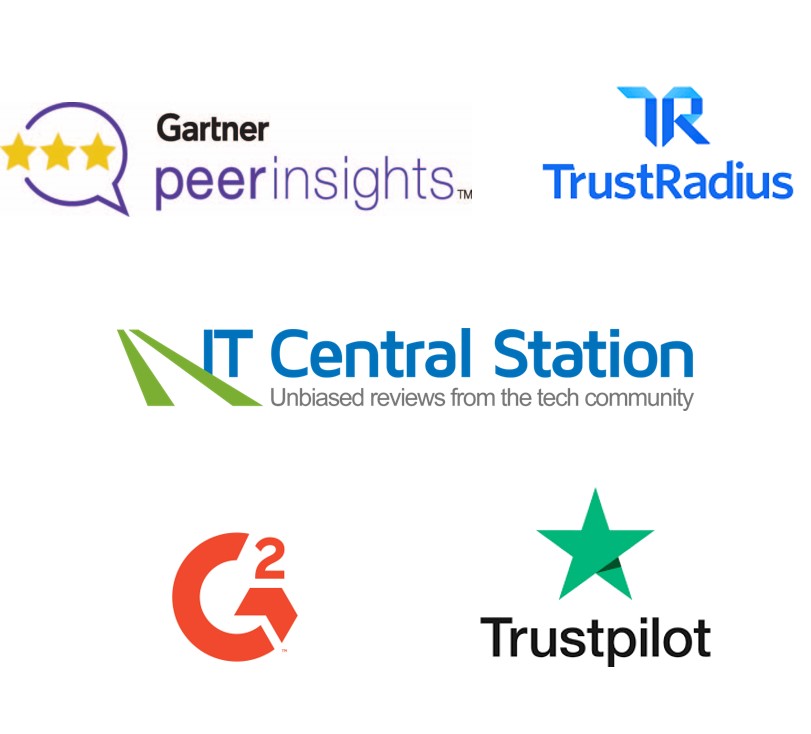
In the midst of the recent tech downturn, the Customer Marketing and Advocacy (CMA) function has experienced significant reductions, standing out in contrast to other marketing areas. Despite its increasing importance over the past decade, it seems that the full power and potential of CMA is still underutilized by many companies.
In this article, I am excited to share valuable insights and learnings from my rich experience in the CMA realm, an integral part of my diverse Go-to-Market (GTM) expertise. It has significantly deepened my understanding of how crucial customers are in driving a company’s growth and brand development. Topics I will delve into include:
- The essence of Customer Marketing and Advocacy
- Common misconceptions about the CMA function
- The evolution of CMA in different organizational stages: startups, mid-sized companies, and large enterprises
- The pitfalls leading to CMA’s ineffectiveness
- Strategies for CMA Managers to enhance their impact
- Anecdotes of companies successfully leveraging CMA
I extend my gratitude to David Sroka, Vinay Bhagat and Chuck Quigley for their invaluable contributions to this article.
Additionally, I am thrilled to announce the launch of my consulting service, aimed at assisting marketing leaders in unlocking the true value and potential of CMA. For more information about my offering, please feel free to reach out to me at sandeep@sandeepsastry.com
The essence of Customer Marketing and Advocacy
This is a combined strategic approach that involves engaging existing customers through personalized marketing efforts to enhance loyalty, retention and encourage repeat business (Customer Marketing), while simultaneously motivating these satisfied customers to actively promote and endorse the brand (Customer Advocacy).
Customer Marketing involves targeted communication, personalized offers, loyalty programs, and engagement strategies, all tailored to the existing customer base.
Customer Advocacy includes initiatives such as encouraging reviews and testimonials, creating customer case studies, managing referral programs, and involving customers in feedback loops.
Customers today evaluate products and services beyond just features and functionality, placing significant emphasis on their overall journey that encompasses the ease and clarity of the buying process, swift deployment times, intuitive product use, and comprehensive post-sales support.
They seek experiences that foster trust and empower them, valuing interactions that feel personalized and responsive at every touchpoint. This holistic view of value underscores the importance of not just what is offered, but how it’s delivered and supported throughout the customer’s entire engagement with the product or service.
It’s a strategy rooted in psychological and social principles, acknowledging that customers’ recommendations and endorsements carry more weight than standard marketing messages.
According Heinz/ Influitive study, 84% of B2B Decision-Makers begin their buying process with a referral.
As Vinay Bhagat, CEO of TrustRadius, a peer reviews company, succinctly puts it
“In a world where B2B tech buyers are increasingly risk averse, credible social proof, in particular robust public unbiased reviews play a critical role in establishing buyer confidence.”
Common misconceptions about the CMA function
Customer Marketing and Customer Advocacy are often misconstrued as synonymous concepts, when in reality, they represent distinct but complementary facets of customer engagement – one focusing on nurturing existing customer relationships, while the other leverages satisfied customers to champion the brand to others.
There’s sometimes a lack of understanding about how deeply CMA can influence a business’s success. Marketing leaders may not fully grasp how loyal customers not only continue to buy but also become brand ambassadors who can attract new customers through word-of-mouth.
As David Sroka, CEO of Point of Reference, a 20-year Customer Marketing and Advocacy Evangelist puts it very articulately
“The Customer Marketing & Advocacy (CMA) discipline has become more comprehensive—and complex. What once may have been a case study production function, or a reference help desk for Sales now includes Customer Advisory Boards (CAB), peer reviews, community, customer-generated content, events and more.
Now, more than ever it’s essential that executives understand the goals of CMA in the context of top company growth goals. Establishing CMA’s strategic importance is the mission. That’s a big change. A CMA professional needs to become adept at change management to be successful.”
It must be noted that Customer Marketing and Advocacy (CMA) differs from Customer Success teams.
Customer Success focuses on helping customers achieve success with the product, ensuring their needs and expectations are met or exceeded. Customer Success involves onboarding, training, regular check-ins, and providing solutions to customer challenges. The goal of Customer Success is to enhance customer satisfaction, reduce churn, and increase the likelihood of upsells or cross-sells
In times of economic downturn, there’s a heightened focus on cost-cutting measures. CMOs may feel pressured to demonstrate quick cost reductions, and cutting less tangible or long-term investment areas like CMA can seem like a swift way to reduce expenses.
CMOs might prioritize targeting acquisition of net new accounts, marketing efforts that show immediate results or have direct impact on short-term sales. Since customer marketing and advocacy often contribute to long-term brand loyalty and customer retention, their benefits might not be as immediately apparent as those from direct sales or advertising campaigns.
The return on investment (ROI) for customer advocacy and loyalty programs can be challenging to measure, especially in the short term. This makes it harder to justify their continued funding during budget cuts compared to other marketing sectors with clearer, more immediate metrics of success.
The evolution of CMA in different organizational stages: startups, mid-sized companies, and large enterprises
The implementation and focus of Customer Marketing and Advocacy can vary significantly across startups, mid-sized companies, and large enterprises, reflecting their different stages of growth, resources, and business priorities
As companies evolve from startups to large corporations, the role of Customer Marketing & Advocacy (CMA) shifts but remains significant. For startups and small businesses, CMA is vital for survival, relying heavily on word-of-mouth and customer referrals due to limited resources. In this stage, direct, personal customer relationships are central to marketing efforts.
As businesses grow into mid-sized companies, the challenge becomes balancing CMA with traditional marketing channels. While CMA continues to play a crucial role in maintaining customer loyalty and differentiating the brand, scaling these efforts effectively becomes essential, often requiring more structured advocacy programs.
In large corporations, CMA is one component of a comprehensive marketing strategy. Although its relative reliance may decrease with diversified marketing investments, CMA remains crucial for sustaining brand reputation, ensuring consistent customer experiences, and staying connected with customer needs for innovation.
Chuck Quigley, an CMA industry veteran, who has led teams in startups, mid-sized and large enterprises shares
“I’ve been doing customer marketing for 15 years at companies employing 100, 500, 3,000, 20,000, and over 110,000 people. Each role I’ve had was different because of the era or because of the emphasis put on the customer marketing function.
Being in the function provides you with an early access read into the health of a business. I’ve often observed that the customer marketing role will make you the person at the company with the most knowledge about the most customers.”
The pitfalls leading to CMA’s ineffectiveness
The failure of Customer Marketing & Advocacy initiatives can often be attributed to several key challenges:
- Organizational Misalignment and Lack of Executive Buy-in: The absence of executive support and an organizational structure that fails to integrate Customer Marketing & Advocacy across departments results in fragmented efforts and under-resourced initiatives.
- Inadequate Customer Understanding and Feedback Utilization: A failure to deeply comprehend customer needs and preferences, combined with neglecting customer feedback, leads to advocacy strategies that miss the mark and erode customer trust.
- Poor Measurement and Inconsistent Customer Experience: Without proper metrics to gauge success and a disjointed customer experience across various touchpoints, it’s challenging to create effective and sustainable advocacy programs.
- Content: Overloading customers with excessive or irrelevant content, and not providing a variety of customer reference assets, such as peer reviews for unbiased feedback, limits the effectiveness of advocacy communications.
- Ineffective Cross-Functional Collaboration and Sales Enablement Gaps: A lack of collaboration between marketing, sales, and customer success, coupled with inadequate sales enablement, leads to disjointed efforts that don’t fully leverage customer advocacy for sales strategies.
Strategies for CMA Managers to enhance their impact
For Customer Marketing and Advocacy Managers to drive impactful results, they need to have a multifaceted strategy
- Integrated Content Strategy Across Buying Stages: Develop a diverse range of content, including case studies, testimonials, and snackable videos, tailored for different stages of the buying cycle. Ensure this content is accessible and relevant, leveraging customer reference tools for easy distribution and application by sales teams.
- Collaboration with Sales and Enablement Training: Work closely with sales teams and sales enablement trainers to incorporate customer advocacy assets into the sales process. Provide training and resources that enable sales teams to effectively use these materials early in the buying cycle, enhancing engagement and trust with prospects.
- Building Community and Focusing on Lifetime Value: Create and nurture a brand community to foster customer loyalty and advocacy. Implement the 80/20 rule to focus on high-value customers and develop strategies to reduce churn by continuously offering value and engaging in meaningful interactions.
- Measuring Impact and Reporting: Establish clear metrics to measure the effectiveness of customer marketing and advocacy initiatives. Regularly communicate these insights to CMOs and other marketing leaders to demonstrate ROI and make data-driven adjustments to strategies.
- Cross-Functional Collaboration for Customer Engagement: Facilitate collaboration between different customer-facing teams, including Customer Advisory Boards, Public Relations, and Customer Success. This ensures a unified approach to customer engagement, leveraging diverse insights to enhance overall strategy and customer experience.
By focusing on these consolidated strategies, Customer Marketing and Advocacy Managers can effectively align with sales objectives, foster lasting customer relationships, and drive sustainable business growth through strong advocacy and community engagement.
Anecdotes of companies successfully leveraging CMA
One of the companies that come to mind that harnessed true value of CMA was Slack, though it was acquired by Salesforce in July 2021.
Slack’s growth hinged on strategic customer marketing and advocacy. They developed a product that fit the market’s need for streamlined communication, gaining a loyal user base. Early tech-savvy adopters became key advocates, boosting growth through word-of-mouth.
Slack strengthened this by building a strong user community and being responsive to feedback, enhancing customer loyalty. Their initiatives, including effective customer support, referral programs, and encouraging user-led brand evangelism, further propelled their success.
Other companies that strategically use Customer Marketing and Advocacy (CMA) include
Coupa emphasizes customer voice in marketing, using real customer feedback to guide buyers and stand out from competitors. Their approach integrates authentic customer testimonials across sales and marketing channels, enhancing credibility and resonance. They also invest significantly in customer lifecycle activities, focusing on capturing and amplifying customer voices to encourage advocacy and influence potential buyers.
SailPoint’s customer marketing revolves around building strong, lasting relationships through active listening and understanding customer needs. They address customer issues effectively, incorporating feedback into product and service improvements. Personalization and a focus on turning challenging experiences into advocacy opportunities are key to their strategy, prioritizing customer needs at every stage.
Ceridian’s advocacy program, Ceridian XOXO, is inclusive and engages customers from the start. They offer a personalized journey with educational resources and rewards for participation. Their strategy involves nurturing customer relationships through professional networking and career advancement opportunities before seeking referrals. They highlight customer successes in marketing materials, leveraging these stories to shorten sales cycles and foster deeper customer loyalty.
Conclusion
To sum up, while companies often focus on short-term gains and new customer acquisition, CMA plays a crucial role in driving long term growth and enhancing brand reputation through existing customers.
Recognizing and investing in CMA not only nurtures loyal brand advocates but also contributes significantly to sustainable growth.
About the Author
Sandeep Sastry is a business consultant and advisor to senior Go to Market (GTM) executives for special projects where they get an unbiased outsider’s perspective. He has over 15 years of experience in companies such as Cisco, Siemens and Pure Storage, driving GTM initiatives, managing cross-functional teams and spearheading portfolio initiatives. He is outcome oriented, achieving measurable results, which include improved win rates by 3 to 5%, increased bookings by 20%, increased sales content adoption from 10% to 40%.




